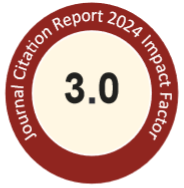Abstract
The maximal production of luteoskyrin and related pigments by Penicillium islandicum was obtained during the late phase of cultivation. Maximum growth of mycelial was observed in potato dextrose broth and the highest productivity of luteoskyrin in malt extract broth. In an optimal substrate, luteoskyrin production was the highest in the 18th day. Mycelial growth and luteoskyrin production were greater in stationary incubation than when shaken. The optimal pH for the mycelial growth was between weak acidity and neutrality. Mycelial growth and the production of luteoskyrin and related pigments were increased by supplying a carbon source such as starch, sucrose, fructose, maltose or glucose. Starch and fructose maximized mycelial growth and luteoskyrin production respectively. Lactose also enhanced luteoskyrin production but inhibited mycelial growth. The organic salts citrate,glutamate, malonate, succinate, fumarate and acetate inhibited mycelial growth and the production of luteoskyrin and related pigments. The acetate in particular displayed the strongest inhibitory effects in this test. Mycelial growth was enhanced by the following nitrogen sources: malt extract, yeast extract, peptone, casamino acid, asparagine and glutamine. However, the production of luteoskyrin and related pigments were only enhanced by malt extract, asparagine and glutamine. Potency of mycelial growth and luteoskyrin production in crops was found in the order of unpolished rice > oatmeal> wheat> polished rice> yellow corn> white corn>unhulled rice. A comparison of polished rice which had been subjected to various treatments showed boiled rice to be the best substrate for luteoskyrin production, especially in the presence of 5% sucrose.
Recommended Citation
Tseng, H.-H.
(1997)
"The growth and production of hepatotoxic luteoskyrin by Penicillium islandicum,"
Journal of Food and Drug Analysis: Vol. 5
:
Iss.
1
, Article 6.
Available at: https://doi.org/10.38212/2224-6614.2957

